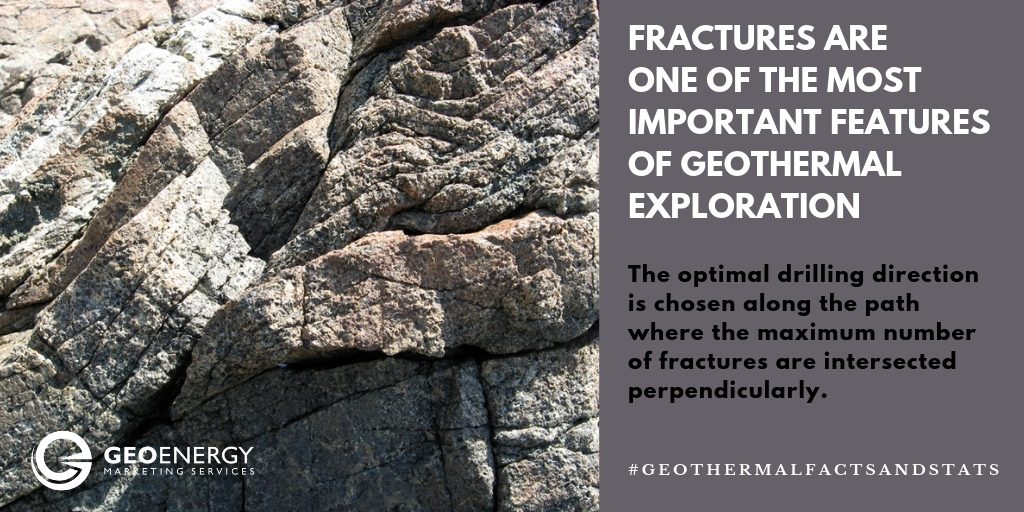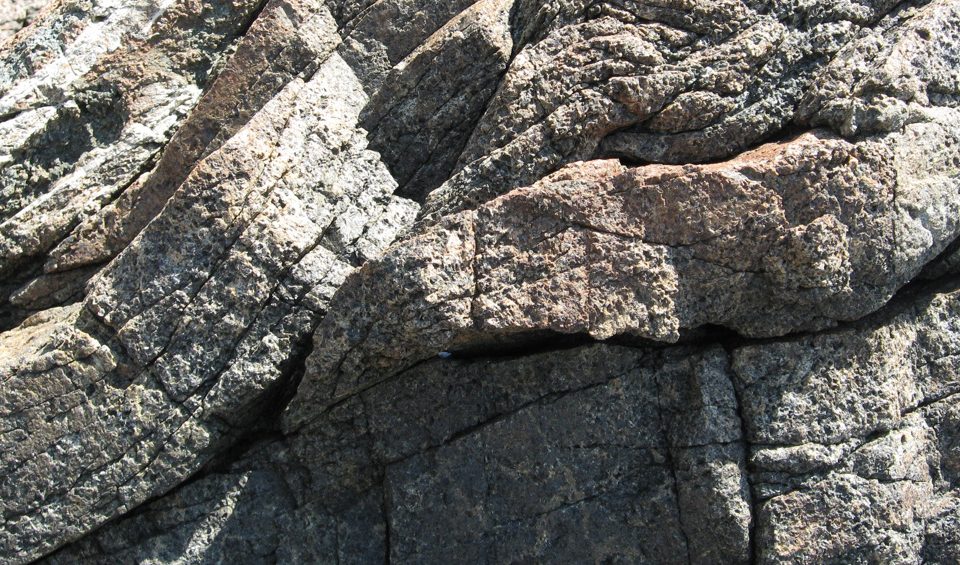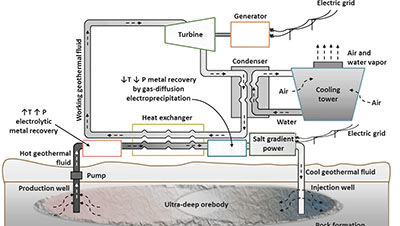Not everything fractured is broken. A fractured geothermal system agrees.
Fractures are one of the most important features of geothermal exploration. They are the main conduits for fluid flow within the subsurface and a geothermal system will not be viable without their presence. Fractures can be natural, induced or enhanced. Natural fractures are caused by past geologic and tectonic stresses. Induced fractures result from drilling and cause widening of the borehole’s internal walls. Enhanced fractures occur when existing natural fractures become widened in the borehole due to drilling.
Lithology and layer thickness play important roles in producing fractures, especially in tectonic areas1. Where strain in regions is high, structural controls influence fracturing and in low strain regions, lithology influences fracturing greater2. Fracture networks are responsible for fluid and gas transport, and it is imperative that fractures are present abundantly along the region where boreholes are drilled for testing. The optimal drilling direction is usually chosen to be along the path where the maximum number of fractures are intersected perpendicularly.
Natural fractures are preferred to access the resource because they form part of a larger, pre-existing and interconnected network in the rock matrix. Fracture volume provides an interface with the matrix that is much larger than the borehole3. Fractures are observed, analyzed and modeled in 1D, 2D or 3D for generating reservoir production estimates and conducting simulations. Identifying a viable fracture network is a key step toward production drilling. What steps are taken to determine this? Find out more in future #GeothermalFactsandStats blog posts.
Follow us on all our Social Media Platforms to catch the latest from our blog and more exciting news and updates!
Author: Elizabeth Bullock
#Geothermal #Fractures #tectonic #geologic #drilling #exploration #renewableenergy
1 Zhao, W & Hou, Guiting & Sun, X & Ju, Wei & Shen, Y & Ren, K & Ye, M. (2013). Influence of layer thickness and lithology on the fracture growth of clastic rock in East Kuqa. Geotectonica et Metallogenia. 37. 603-610.
2 Hannah Watkins, Robert W.H. Butler, Clare E. Bond, Dave Healy (2015) Influence of structural position on fracture networks in the Torridon Group, Achnashellach fold and thrust belt, NW Scotland, Journal of Structural Geology, Volume 74, 64-80,
3 Akbar, M., Roy N., Piyush P., Chaturvedi, J.G., and Bob. (1993). Middle East Well Evaluation Review. Schlumberger ONG



